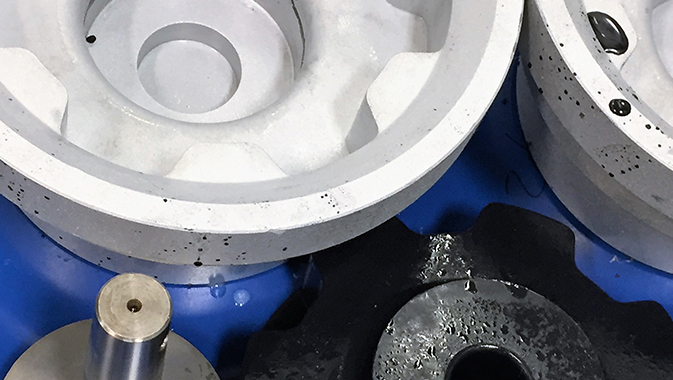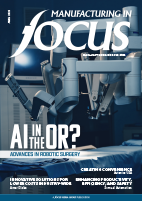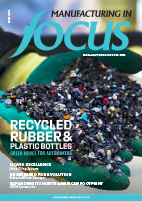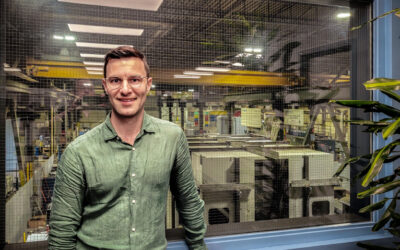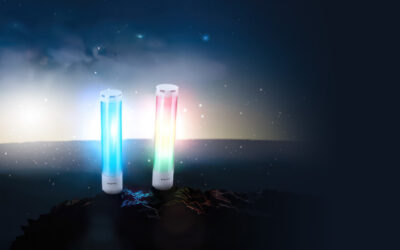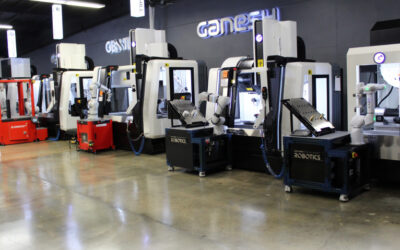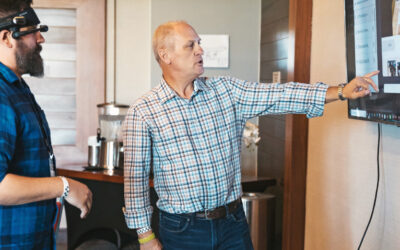The countless uses of urethane are still relatively unknown in the components and parts industry. The material’s phenomenal physical properties are much greater than those of commodity polymers, with greatly improved wear, impact resistance and durability, making it perfect for heavy-duty applications.
~
Bought by parent company the A. Stucki Company in 2010, the relationship between Seco Machine and A. Stucki developed many years earlier. Seco Machine was originally A. Stucki’s long-time machine component supplier, and when the latter decided to purchase Seco, it moved some of its urethane operations from Mexico to Seco’s U.S. facilities, in the process establishing Seco as America’s leading urethane product supplier. Today, Seco Urethane is an extension of Seco Machine, specializing in custom-cast urethane parts for railway cars.
Its 60,000+ square foot facility offers a 20,000 square foot inventory warehouse and both pick-up and delivery are made possible by the facility’s easy access to I-77.
Long before its involvement in urethane, Seco Machine was founded in 1985 in Canton, Ohio. It started its journey as a small family-owned operation in the machining industry. Local businesses quickly identified it for its quality products and its ability to fill orders quickly. As sales continued to increase, Seco outgrew its original shop space and moved to North Canton, where it would eventually cross paths with the company called A. Stucki.
The latter has historically led the international development and application of railcar dynamic, or motion control products since 1911. It was founded by Arnold Stucki, a Swiss immigrant engineer, who pioneered the use of side bearings in freight cars. Today, its products lengthen maintenance intervals and assure increased profits for owners and operators around the world. Seco Machine is an integral part of A. Stucki’s precision-engineered urethane damping components.
To achieve the damping effect, urethane components are employed to decrease and absorb energy. A. Stucki also incorporates Seco’s urethane in suspension components, for exactly the same characteristic. Seco Urethane uses scientific concepts such as this in many other precision-engineered applications where impact and vibration might otherwise cause application failure or breakdown. Its range of urethane products further help to isolate and damp energy from systems where excess energy and vibrations not only are undesirable, but can potentially have detrimental effects to certain processes.
So why is Seco urethane special? Thanks to heavy investment in advanced research and development, Seco’s urethane molds and poured urethane parts offer tremendous longevity and durability, allowing customer operations to run longer without having to shut down for routine maintenance, saving them fortunes in time and revenue – a rather large benefit considering the cost of shutdowns.
In fact, the company offers customers a complete turnkey operation. Taking on the full process, its vast portfolio of urethane capabilities includes full product design and development as well as complete chemistry and hardness testing in its state-of-the-art lab. Seco offers custom mold design and manufacturing, as well as speedy prototyping and automated trimming and finishing services. Curing happens on site and material development support includes its extensive experience in urethane substitution over traditional, more expensive materials. Seco is also able to bond urethane to an array of materials, including steel. Light assembly and flexible packaging options complete the package.
A very important aspect of the company’s offering is gauging and qualifying parts with coordinate measurement machinery – a way to ensure the repeatability and reproducibility, or R&R, of components. The company also performs long-term destructive material testing to ensure that parts will hold up to any specified timeframes.
Seco Urethane’s strength is in its agility and ability to reverse engineer and prototype sample parts with very short lead times. Its streamlined operation is also capable of taking on small, more specialized jobs, especially when volumes make it impossible for larger polymer suppliers. The Seco team can 3D laser scan components and turn these into CAD models that can be machined into a mold or part, directly from the scanned data. Once the prototype mold is rendered, actual working sample parts are poured for customers to test. The company also has the ability to 3D print molds for urethane prototype pouring. Not many companies have access to the high-tech tools and skill sets available at Seco Machine.
The company is no stranger to great achievements, the greatest of which was successfully implementing its urethane plant at Seco Machine. It took only around six months from the design phase to being up and running and producing top quality products ready for market. Its modern plant operates continuously at an average scrap rate of two percent or lower. It doubled the standard supplier capacity within one year from start-up and is still growing. As always, A. Stucki and Seco Urethane’s teams worked exceptionally well together. With Seco’s dedication to staying up to date with the latest manufacturing technologies combined with Stucki’s urethane knowledge, the new plant quickly became successful and adapted to its new means of manufacturing.
A good example of the symbiosis that developed between the two companies is when Seco applied its advanced 5 Axis machining capabilities to create mold cavities in stock aluminum, creating custom cast aluminum parts without the long lead time and cost of expensive cast form.
This was a great leap from Seco’s earliest formulation offering, which included only one material of one hardness in one color. In the beginning, the only variations on its products were in shape and size; today, the company can process urethane from 40A to 80D-level hardness, for those familiar with durometer measures. Its products now come in a variety of formulas and colors and the company can mix in specialty additives to enhance certain properties.
Seco’s improved formulations and developments are spurred by working with its customers to find solutions to their problems. “We want to partner with them and are willing to try new solutions to help them. It has really been a rewarding and enjoyable process to be a part of,” says Jon Kaufman, A. Stucki’s Urethanes & Polymers Product Manager. Jon started out at the company in 2007 in the research and development lab testing rail products and urethane parts and developing new products, material formulations and tooling designs. Before moving on to his current position, Jon also designed Seco Urethane’s plant layout. All this experience gave him a well-rounded overall understanding – not only of the material itself, but of all the processes involved in taking products from raw materials to the marketplace.
A. Stucki’s central corporate engineering team consists of approximately a dozen people. As the only chemical engineer on the team, Jon heads up the technical development of parts and materials for the urethane plant. Here, he works with Nick Thomas, Production Manager, to figure out how to implement new material and new parts into its production line. Positions in the urethane parts processing department are rotated amongst another dozen team members to ensure that they can step in for each other when the need arises; this approach also ensures that everyone understands the complete process thoroughly. This team is proud to be focused and tough, as it is not an easy environment to work in. They often spend entire days in front of hot ovens and the team’s tenacity is highly prized.
After many years, Seco Urethane continues to uphold Arnold Stucki’s legacy of providing customers with the highest quality railcar components along with relevant support to address all their needs. The company prides itself on developing quality products and customer relationships regardless of the scope or size of their contracts. Jon believes that you never know when a small product offering will turn into a large one.
Seco Urethane is looking toward the future with the goal of expanding on easy-to-implement equipment and product processing. With the advancement of robotics, Jon predicts that automation implementation will become increasingly more available and user-friendly. The company’s development and research science is set to continue improving materials, which will allow for easier processing. He sees the entire industry continuously improving and investing in its already very safety-conscious fabrication conditions, conscientiously building on what it has achieved thus far.

